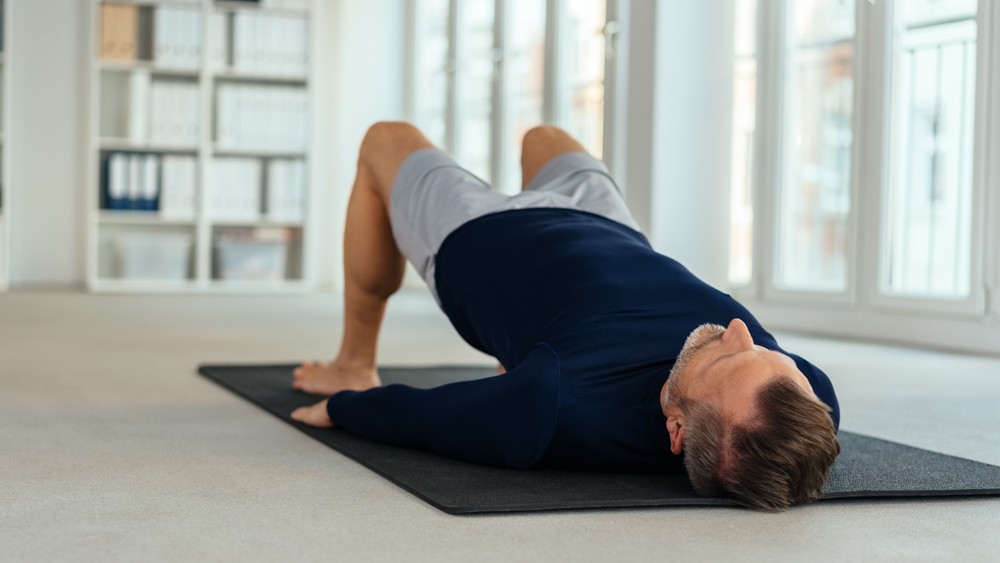Essential Exercises To Help Manage Back Pain
Plus expert advice on when to see a doctor about back pain

Back Exercises To Improve MobilityBack Exercises To Increase Strength
Whatever kind of lifestyle you lead, back pain can strike you down at any time. It’s an incredibly common problem and once you’ve suffered from it, it’s important to have a strategy for managing the symptoms because back pain is something that unfortunately tends to recur.
There is some good news though, which is that back pain is usually benign.
“It is believed that 60% of those who suffer from acute lower-back pain recover in six weeks and up to 80-90% recover within 12 weeks,” says Dr John Etherington, medical director at Pure Sports Medicine.
Having a set of exercises to manage your back pain will help, and you can find four moves recommended by Etherington below. Before that, however, you should check if your back pain is something that needs to be seen by a medical expert.
“Some features can indicate more serious causes of back pain and you should seek immediate professional help,” says Etherington. These features include:
- Numbness or tingling around your genitals or buttocks
- Difficulty passing urine
- Loss of bladder or bowel control
- Chest pain
- Back pain associated with a high temperature of 38°C or above
- Back pain associated with unexplained weight loss
- A swelling or deformity in your back
- Pain which does not improve after resting or is worse at night
- Prolonged stiffness in the morning – usually lasting longer than one hour after getting up
- Pain which started after a serious accident, such as after a car accident
“You should also seek professional help if the pain does not start to improve within a few weeks, stops you doing your day-to-day activities including work and sport, is very severe or gets worse over time, or you’re worried about the pain or are struggling to cope,” adds Etherington.
Sign up for workout ideas, training advice, reviews of the latest gear and more.
Back Exercises To Improve Mobility
Arm opener/thoracic rotation

“Lie on your side with your hips and knees flexed, head supported and arms extended in front of you with your hands together,” says Etherington.
“Protract your shoulder blade by reaching forwards with your top hand, then retract back and slowly lift your arm and rotate your trunk to reach the ground on the opposite side. Look at your fingertips during the entire movement to make sure you are rotating your spine and not just your arm. Come back to the starting position and repeat. Your lower back, hips and legs should remain still during the exercise.”
Lumbar knee roll
“Lie on your back with your knees bent and your feet on the floor,” says Etherington. “Place your arms out to the sides for stability. Slowly lower your legs to one side until you feel a gentle stretch. Return to the central position and repeat. Keep your knees together during the movement.”
See related :
- Exercises To Relieve Back Pain That Are Safe, Simple And Office-Appropriate
- How To Prevent And Treat Back Pain
- Four Back Stretches And Exercises To Prevent Painful Problems
- 5 Stretches And Exercises That Will Feel Amazing After A Day At The Office
- Three Easy Neck Exercises To Help Prevent Neck Pain
Back Exercises To Increase Strength
Glute bridge

“Lie on your back with your knees bent and feet shoulder-width apart, and your arms by your sides,” says Etherington.
“Push through your heels and squeeze your glutes to lift your buttocks until your thighs are in line with your torso. Do not extend with your lower back. Lower and repeat.”
Standing crab walk
“Wrap a mini resistance band around your legs just above your knees,” says Etherington. “Turn your feet out slightly to 10 and 2 o'clock. Bend your knees just deep enough to place them over your toes, straighten your back and bend at the hips slightly. Keeping your knees are in line with your feet, side-step slowly, maintaining the half-squat and the slight external rotation of the legs. Step in one direction, then the other so you work both sides.”
Dr John Etherington is medical director of Pure Sports Medicine

Nick Harris-Fry is a journalist who has been covering health and fitness since 2015. Nick is an avid runner, covering 70-110km a week, which gives him ample opportunity to test a wide range of running shoes and running gear. He is also the chief tester for fitness trackers and running watches, treadmills and exercise bikes, and workout headphones.
